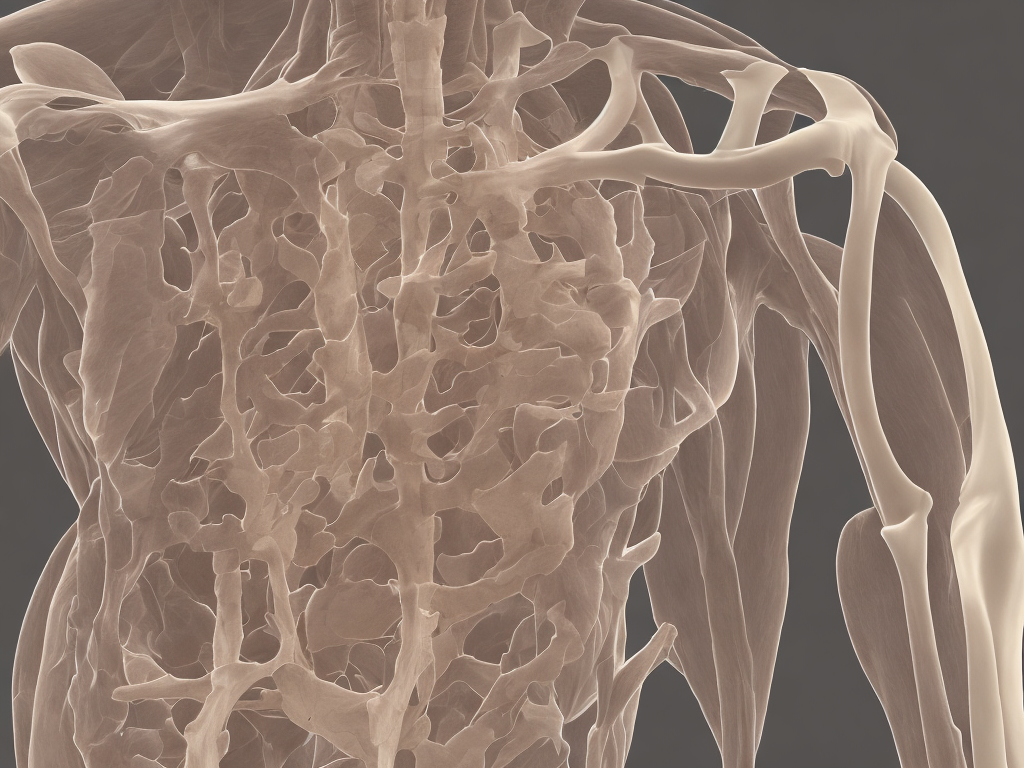
Human bodies are composed of various types of tissues, each with its unique properties and functions. Bone and cartilage are two such essential tissues that perform crucial roles in our skeletal system. Bone forms the hard, structural framework of the body, while cartilage provides flexibility and support to various body parts. However, many people are often confused about the differences between bone and cartilage and their respective roles. In this article, we will explain these differences in detail.
Structure and Composition:
Bone is a hard, dense tissue that comprises a mixture of collagen fibers and mineral deposits mostly composed of calcium. The collagen fibers provide the bone's tensile strength while the minerals provide its compressive strength. This structural design gives the bone its unique properties of being tough and rigid, yet elastic enough to withstand stress and pressure. Bones are not a solid mass but rather honeycombed structures consisting of cells, collagen, and mineral deposits.
On the other hand, cartilage is essentially a connective tissue composed primarily of chondrocytes - specialized cells that produce and maintain cartilage tissue. Unlike bone, it is a soft, pliable, and elastic tissue, which appears as a smooth and shiny substance. This softness is due to its high water content, which makes up to 85% of its composition. Cartilage has no blood vessels or nerves within, and its nourishment comes from the surrounding tissues.
Functions:
The functions of bone and cartilage are complementary, but they are different. The primary function of bone is to provide structural support and shape to the body, enabling us to stand upright, move, and protect internal organs. The long bones, for instance, provide mechanical support, while the flat bones, like those of the skull, protect vital organs from injury. The bone also stores minerals such as calcium and phosphorus, which are critical for the body's metabolic functions.
Cartilage, being a flexible and pliable tissue, plays a different role. It acts as a cushioning material between two bones' surfaces, reducing friction and protecting the surfaces. It also provides structural support to some parts of the body, such as the ears and nose. Another critical function of cartilage is to absorb shock and pressure from movements, thereby reducing the stress on the body. This ability is particularly valuable in joints, where the cartilage covers the bone surfaces and provides smooth movement with minimal friction.
Regeneration Capability:
Another crucial difference between bone and cartilage is their ability to regenerate or repair. The bone has a remarkable capacity to heal and recover from injuries. It can regenerate almost entirely, provided the damage is not extensive and the bone's periosteum is intact. The periosteum is a fibrous membrane that covers all bones' surfaces and contains growth cells essential for bone repair. In cases of bone fractures, the body produces new bone cells, which grow and replace the damaged or lost bone tissue. Moreover, the bone has a rich blood supply that helps transport nutrients, oxygen, and other essential elements to the bone cells, aiding in their recovery.
In contrast, the cartilage has a very limited capacity to regenerate and recover from injuries. Due to its avascular nature, there are no blood vessels that supply the nutrients and growth factors necessary for cartilage repair. Therefore, the damage sustained by the cartilage tissue can lead to the propagation of damage, causing severe pain and joint dysfunction in the long run. Moreover, once the cartilage is worn out or damaged beyond repair, it cannot regenerate, leaving a void that can cause further damage and pain.
Location:
Bones are spread throughout the body in different shapes and sizes, forming the skeleton. The human skeleton comprises 206 bones, each with a unique function and structure. The skeletal system is divided into two main groups- Axial, which includes bones in the skull, vertebral column, ribs, and sternum, and Appendicular, which includes bones in the limbs, pelvis, and shoulder.
Cartilage, on the other hand, is present in the body in more localized areas. It is most commonly found in joints, where it forms a crucial part of the joint structure. The cartilage tissue is also present in the ears, nose, and parts of the respiratory tract. The nose and ears have cartilage as their primary structural component, giving them shape and protecting the delicate tissues within.
Conclusion:
In conclusion, bone and cartilage are important tissues that perform different but complementary functions in the human body. Bones support the body structure, provide mechanical support, and protect vital organs, while cartilage provides flexibility, cushioning between two surfaces, and structural support in various areas of the body. The difference between bone and cartilage lies in their composition, structure, function, regeneration capability, and location. Understanding these differences can help us understand why these tissues are essential and how they function in our body.
 Self-Instruct
Self-Instruct